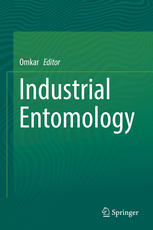

Most ebook files are in PDF format, so you can easily read them using various software such as Foxit Reader or directly on the Google Chrome browser.
Some ebook files are released by publishers in other formats such as .awz, .mobi, .epub, .fb2, etc. You may need to install specific software to read these formats on mobile/PC, such as Calibre.
Please read the tutorial at this link. https://ebooknice.com/page/post?id=faq
We offer FREE conversion to the popular formats you request; however, this may take some time. Therefore, right after payment, please email us, and we will try to provide the service as quickly as possible.
For some exceptional file formats or broken links (if any), please refrain from opening any disputes. Instead, email us first, and we will try to assist within a maximum of 6 hours.
EbookNice Team

Status:
Available4.8
18 reviewsThis book is a compilation of writings focused on conventional and unconventional insect products. Some of these products are commercials successes, while others are waiting to be launched and are the potential produce of the future. In addition to the well known products honey, mulberry silk, and lac, the book primarily concentrates on silk producing insects other than the mulberry silkworm, insects as food, as sources of medicines, pest and weed managers, and as pollinators.
The book highlights the all pervasive role of insects in improving human lives at multiple levels. Accordingly, while most books on insects concentrate on how to limit growth in their population, it instead focuses on how to propagate them. In each chapter, the book brings to the fore how insects are far more beneficial to us than their well publicised harmful roles.
This book approaches both unconventional and conventional insect products, such as honey, silk and lac in much more depth than the available literature. It investigates different aspects of the production of these insects, such as the related processes, problems and utilities, in dedicated chapters.
Because this book deals with the production of insects or their produce, it has been named Industrial Entomology, perhaps the only book that truly reveals the tremendous potential of insects to help humans live better lives. Based on the research and working experience of the contributors, who are global experts in their respective fields, it provides authentic, authoritative and updated information on these topics.
The book offers a unique guide for students, teachers, policy planners, small scale industrialists, and government ministries of agriculture and industry across the globe. It will provide a much required stimulus to insect appreciation and generate enthusiasm for research and the broader acceptance for insect produce. Hopefully, it will also present the Indian perspective on these topics to a global readership.